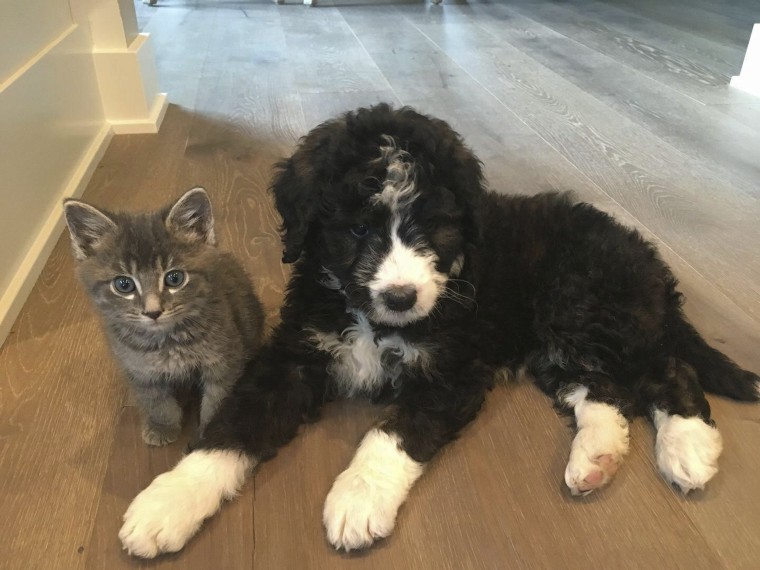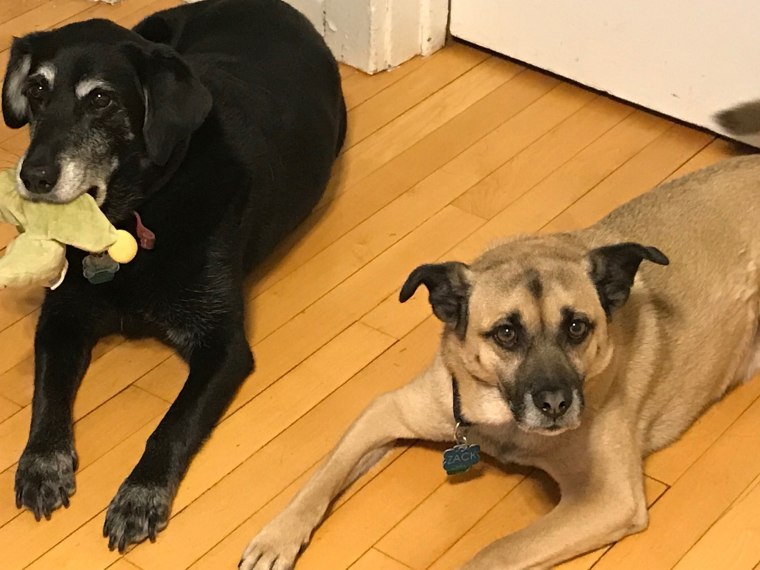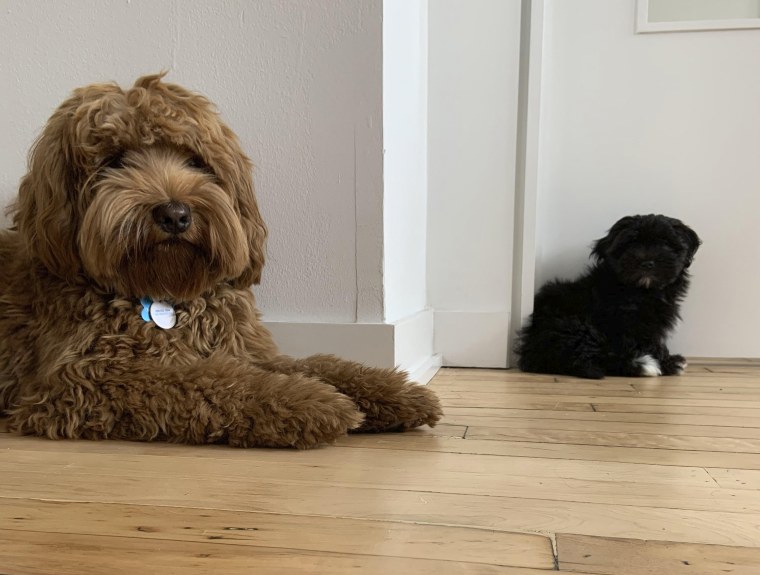Roxy is one of those dogs who makes everything easy: “She’s just all love, very little maintenance,” Cameron Gearan says of her laid-back lab mix. “She never gets sick. She doesn’t bark.”
When Gearen decided to bring a second dog into her Chicago home, she figured the new addition would offer more of the same. She soon discovered, however, that “you can’t get that dog twice, actually. That’s not going to happen.”
Her new dog, Zack, required much more time, effort and expense than Roxy ever had. Though he’s now happily acclimated, Gearen says she struggled through moments when she wondered if this new arrangement could possibly work.
That’s a common experience.
“We sometimes have expectations of pet No. 2 that are colored by our experience with pet No. 1,” says Candace Croney, an animal behaviorist and director of Purdue University’s Center for Animal Welfare Science. “And it’s not necessarily fair to either of them.”
Especially when a pet is getting older, bringing in a second animal can seem like a natural thing to do. Owners may hope a puppy can give the older pet an infusion of exercise and energy. They may also hope the presence of another pet will soften the blow when they eventually lose the older one.
Brette Sember has had good luck adding a new golden retriever puppy to her home each time her older golden retriever has reached its final years.
“It’s always gone smoothly,” says Sember, who lives in upstate New York. “There’s an adjustment period where they figure out dominance and become friends. The hardest part is the housetraining, and policing the chewing the new puppy does.”

But for many pet owners and pets, the process can be challenging. The cheerful bonding they’d hoped for between two pets might not happen when a dog accustomed to being on its own is suddenly paired with an animal of a different age or temperament.
Some tips if you’re considering getting a second dog:
CONSIDER THE COMMITMENT
It takes time, effort and money to add another pet to your home.
“That puppy phase, it’s so time-intensive,” says Lauren McDevitt, co-founder of the pet placement service Good Dog . “So you need to think about whether you’re able to dedicate that time.”
And even if you’re adding an older pet, it takes time: Introduce the pets slowly by keeping them mainly in separate spaces during the first days or even weeks.
“I tend to give a it a few weeks,” Croney says. “Most people don’t tend to have the patience to do that. But it’s much better to go slow and set things up to succeed rather than having to course correct.”
Be patient with yourself and the pets on difficult days. As she incorporates a new puppy into her home, Sember says, “there is always at least one biting incident where the older dog establishes dominance. It’s happened every single time, but is never serious.”
WHAT AGE IS BEST?
People often opt for a puppy or kitten, and that can work. Older dogs “can do well with a young puppy,” McDevitt says, “but sometimes it can be a little bit of a nuisance to them.”
Croney agrees: “Many of these older pets just want to rest and relax” and might be happier if their new playmate were closer to their age.
You may be hesitant to adopt an older animal, especially if you’re already facing medical issues or concerns over losing your current pet, she says. “But older pets can be so wonderful and, frankly, are somewhat less work.”
THE RIGHT MATCH
Although it might seem logical to bring your current pet to a shelter or breeder to meet a prospective new friend, a dog’s behavior in a place crowded with other animals might not reflect what life would be like at home. And taking your dog to a dog park for the first time to assess their experience with other dogs also might not yield accurate information.
Most important is really talking with the shelter staff or breeder about the right pet for your home. “Ask a lot of questions about the pet’s interaction with other animals,” McDevitt says. How much have they been around other pets, and have those experiences gone well?
If you’ve found a possible candidate, Croney suggests introducing the dogs on leashes on a walk, so they can meet in a neutral space. Ideally, have them interact on walks on a few different days to see how they get along.

Be sure the new pet is healthy to avoid any health risk to the other animal.
Lastly, don’t assume the new pet will be able to handle the same routine as your current pet. Some dogs, like Gearen’s Zack, can’t tolerate being at a “doggie daycare,” for instance. Animals have their own personalities, habits and feelings, just like children, Gearan says.
Despite the challenges, she says adding her second pet turned out to be a wonderful choice.
“It was a learning experience and an expensive one,” Gearen says. “Now Zack is this incredible source of love in our family and none of us can imagine if he wasn’t here.”
MORE PAWRENTING ADVICE
- Have a dog or cat? Do these things to keep everyone in your house happy and healthy
- The mistakes people make at the dog park that put their pet at risk
- What you need to know about CBD oil and your pets
Want more tips like these? NBC News BETTER is obsessed with finding easier, healthier and smarter ways to live. Sign up for our newsletter and follow us on Facebook, Twitter and Instagram.


